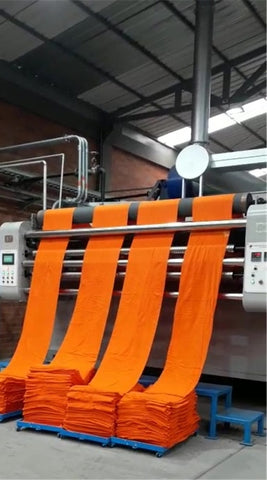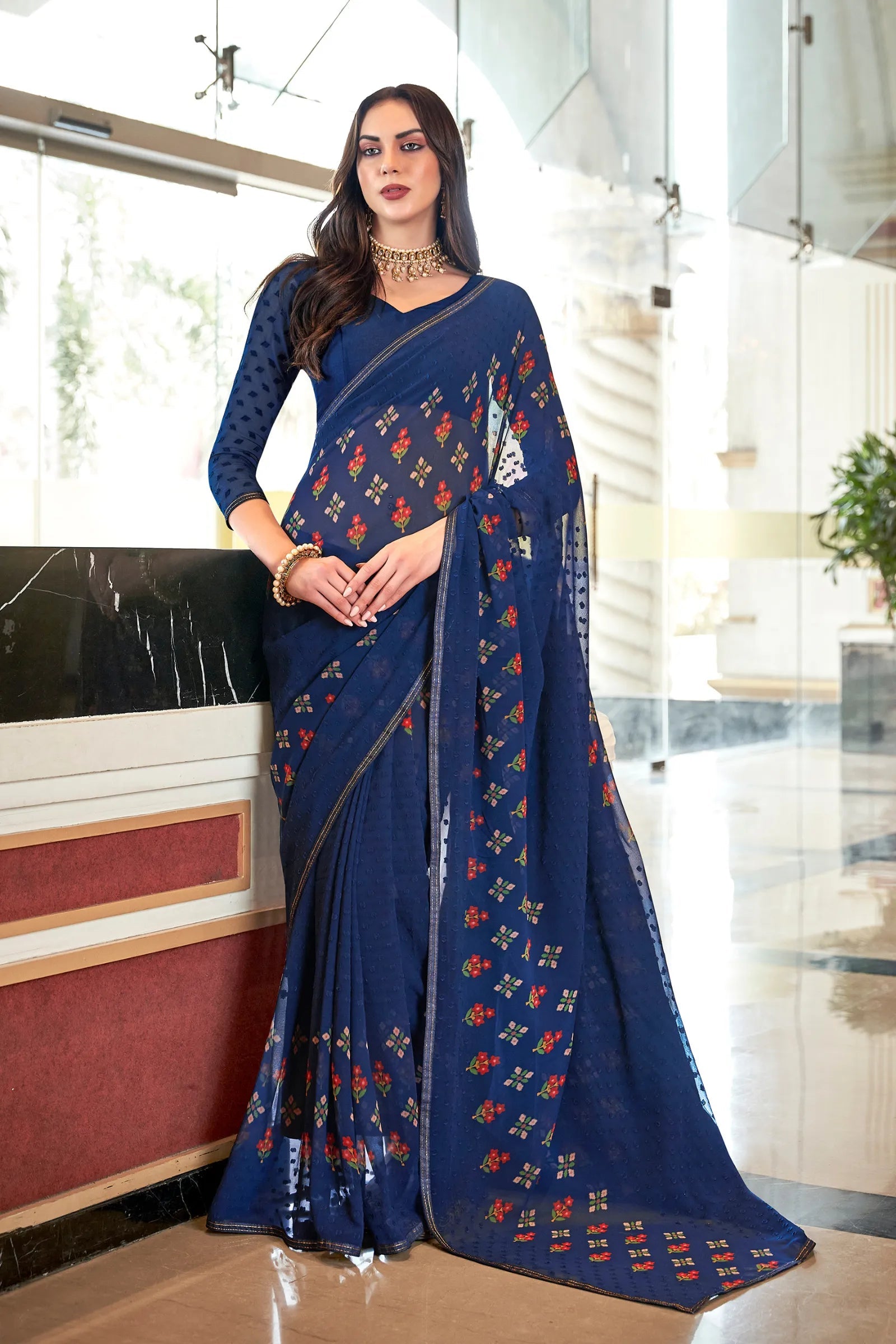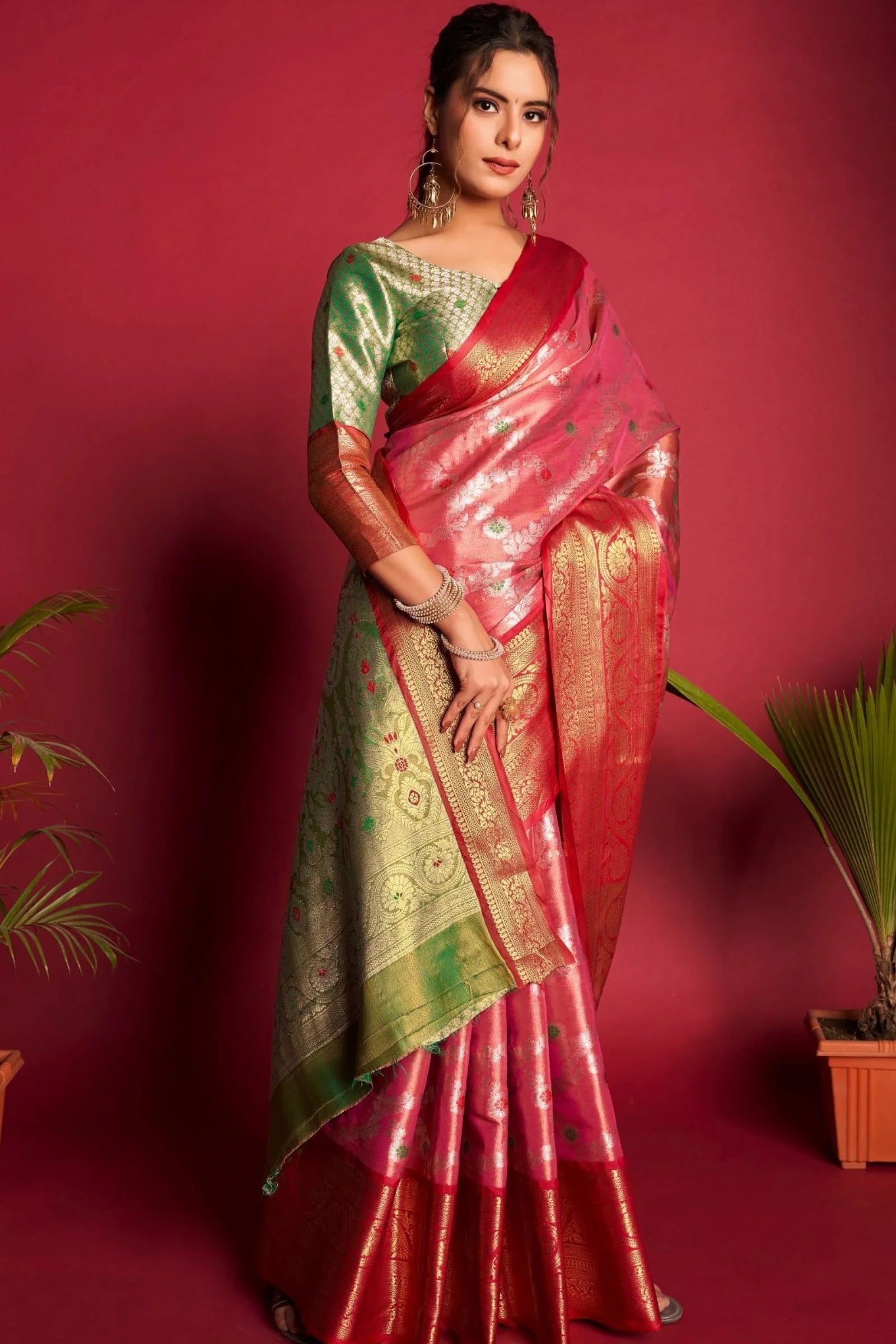The saree or sari represents Indian culture in its correct form. This ancient garment embodies the woman's personality, who is graceful and elite. The saree works wonders for your personality as it can be draped in different styles that vary in color, print, design, texture, fabric, and many other elements.
We have always heard that a saree is a style statement, and why not! The saree is a versatile garment that can be worn by women of all ages and for any occasion, be it casual, parties, or even the office. It also fits your wallet and the best part is that a saree reflects your culture, as countless types of sarees originate from different states, each telling a story that represents a certain tradition.
As we know, there are a lot of questions about how to wear a saree or which saree to choose for a particular occasion, or which fabric to choose for a casual saree or party saree. But do we know how this wonderful garment is made? Well, most of us still live in a nutshell. It does not matter because it's never too late to educate yourself. After all, learning never becomes obsolete. You should always be ready to learn what comes your way.
In this blog, we will educate you about the process of saree-making from scratch which will make you more curious and want to wear a saree.
Manufacturing of Saree

A yarn that goes through various steps to create a 6-9 meter long unstitched fabric that makes an excellent woven saree adorned with various motifs and patterns to fall in love with.
Let us see these exciting steps that turn into a glamorous traditional piece to drape.
Step 1
The first step is to assemble all the pieces of the raw fabric into a single piece. For this purpose, the pieces of fabric are roughly sewn together by the workers. Experienced artisans work for days and even months to bring out the fabulous ethnic creativity in this 6-meter-long fabric.
Step 2
Fabric dyeing into a JET dyeing machine

Before the saree fabric is printed, it is thoroughly washed in the large dyeing machine JET. This process is very important because it removes stains and invisible dirt from the fabric and cleans it thoroughly.
Step 3
Fabric Drying Process

After thorough washing, the saree fabric was dried in the factory in the large drying machine. The drying machine dries the fabric very quickly, and then the saree fabric bundle is passed to the next stage.
Step 4
Saree Width to be decided
The saree fabric is now ready for further processing, such as cutting the fabric, printing designs on it, etc. In this step, the width of the fabric is checked to find the right size for the saree. And of course, cutting off the excess fabric if needed adjusts the size of the fabric.
Step 5
Fabric Folding
Now the saree fabric is folded properly with the help of a fabric folding machine to remove the wrinkles in the fabric. Now the long saree fabric is ready for cutting.
Step 6
Fabric Cutting into Desired Size
After the large saree fabric is folded, it is cut into several pieces for further processing. The cutting is done manually by the factory workers. Folding the large fabric makes cutting very easy and fast.
Step 7
Saree Designing

What makes the saree so graceful? It's the patterns and the colors. Therefore, designers not only choose the colors but also design various new elements for the saree. Then some designs are selected to be printed on the saree fabric pieces. The designs are now sent out for testing.
Step 8
Design Testing before Execution
The selected saree designs are now tested before the actual printing of the saree takes place. If the designs print correctly on the test fabric, the design test is successful. Now the design is released for the next step, the printing of the saree.
Step 9
Printing the designs on the Saree Fabric
The saree fabric is now ready to be printed with the selected designs. The saree motifs are precisely pasted onto the blank saree fabric by the large printing machine. At this stage, the saree gets a new vibrant look and it makes you colorful when you wear these beautiful sarees.
Step 10
Processing of the Printed Fabric on the Loop Machine
Now you may not know how to make the colors and patterns on the saree fabric permanent. This step makes it possible. At this stage, the printed fabric is processed in the looping machine so that the print lasts forever.
Step 11
The final wash of the Printed Fabric
After the printed fabric is processed in the loop machine, it is thoroughly washed. This process removes the printing chemicals and unwanted odors from the fabric and the saree fabric becomes fresh and skin-friendly.
Step 12
Drying and folding the printed fabric
After the last wash, the printed saree fabric is dried. Now the long saree fabric is folded neatly with the folding machine.
Step 13
The printed fabric bundles are ready to send for the last touch-up
Bundles of printed saree fabric are made. These bundles are ready for the final touch-up. Now that the final touches have been completed, it is time to get down to the business of cutting the fabric to the right saree size, sewing the border, and adding lace to the border if necessary.
Finally, these bundles are sent to various merchants who are now responsible for bringing the beautiful sarees to market.
This was an interesting tour of saree making, where the raw or blank piece of fabric is transformed into colorful ethnic sarees.
How are Silk Sarees made?

Silk, the queen of textiles, rules the textile industry with its luster, sensuality, and glamor. The history of silk dates back as far as 4,500 years. India is the second largest producer of silk, accounting for about 18 percent of world production.
Today, the silk weaving tradition in India revolves around the sari, the ethnic traditional wear worn in most parts of the country. The Indians dress in elaborate and colorful silk sarees on festive occasions. The vibrant colors, lightweight, resilience, and excellent drape have made silk sarees the irresistible and unavoidable companion of Indian women. Indian silk is the most used fabric with a variety of designs, weaves, and patterns.
Manufacturing of Silk Sarees

Silk, a natural protein fiber, is produced by the silkworm by spinning around its cocoon. The entire process starts from the eggs till the worms are grown up and cocoons are formed. The silk farmers let the caterpillars that make the largest cocoons turn into moths. The moths then laid eggs and the eggs hatched out more caterpillars making for even bigger cocoons. Over the centuries, the size of the cocoon has increased and silkworm cocoons are now much bigger than the cocoons of other caterpillars (see picture). At least half a mile of continuous thread may come from one cocoon.
The silk threads are then dipped in color liquid and used for preparing the colorful silk, Saree. Chinese are the ones who started the manufacturing of silk sarees. Out of the numerous species of silk moths, scientists have identified about 70 silk moths that are of some economic value. The four commercially known varieties of natural silk are-
- Mulberry silk
- Tusser or Oak Tasar silk
- Muga silk
- Eri silk.
Although the bulk of the world's silk supply comes from the silk moth Bombyx Mori, which is domesticated, the other varieties of silk are known as wild silk, as they are grown in remote forest trees in natural conditions.
Saree Making Machine
It has always been an interesting part to know about your sarees. Most of us still stagger when we think of buying sarees. Because of the high price, we hesitate to buy beautiful sarees.
But do we know the actual difference between handloom and power loom? The principal types of machinery in the manufacturing of sarees.
A loom is a device used to weave threads or yarns into cloth. There are several types of looms, made of different materials, sizes, and shapes. The most important distinguishing feature is the amount of human intervention required. Essentially, both the loom and the handloom are methods of weaving threads into fabrics. Handlooms, as the name implies, are operated by the hands of skilled artisans. Power looms are mechanical and require very little human intervention.
Though, sarees woven on power looms are expensive because of their rich and meticulous creation. On the other hand, sarees curated on the handloom are pocket-friendly and are woven to showcase the culture and skills of the local weavers.
There are prominent differences in the saree-making process -
Touch of the Saree - Handloom sarees are smooth and soft due to the casual weaving process, whereas power loom sarees are apt because of the compact making in the machine.
Finishing off the Saree - Saree manufactured on handloom has both the same front and back. Power loom sarees are a bit unfinished and have hanging threads on the inner side since they cannot be woven in by the machine.
On the Budget - Since handloom sarees are laborious, they are more expensive than power loom sarees. Sarees manufactured on the power loom take less time and effort.
Handloom Saree Weaving Process

Handloom weaving is an Indian way of life and has been the pride of traditional and cultural splendor for centuries. The most influential personalities wear these hand-woven, two-meter-long marvels that have become ubiquitous garments. But their modern counterparts have also embraced them to enhance their style and professional image like never before. 95% of the world's handwoven fabrics are made in India, according to well-researched sources.
If you have ever visited a weaving village, you will be familiar with skilled Indian textile weaving. If not, get involved in the fabulous journey through the preparatory stages of a hand-woven saree. The excursion into the making of the richest handloom sarees is sure to leave you mesmerized. Here are the steps involved in this ancient art.
A shuttle-pit loom, made of rope, wooden beams, and poles, is often used to weave handwoven sarees. In addition to winding, warping, dyeing, sizing, assembling, dressing, and weaving, handloom sarees undergo a lot of preparatory steps. Raw materials are selected before any process begins. The most popular raw materials for hand weaving are cotton, silk, wool, and linen. Each region of India uses different raw materials to make its distinctive handwoven products.
Knowing about the saree manufacturing process intrigues the urge to wear a saree. Explore the wide range of our sarees to gather a better collection. Visit Iraah.Store

